General Secretary andPresident To Lam met with United Nations Secretary-General Antonio Guterres on the occasion of attending the 79th session of the United Nations General Assembly and working in the United States, September 24, 2024_Photo: VNA
International context
Reshape the world economic - political - security landscape.
The world is undergoing epochal changes, the international economic , political and security environment is evolving rapidly, complexly and unpredictably. Peace, cooperation and development are still the major trends, but are facing many obstacles and difficulties; strategic competition between major countries and local conflicts continue to take place in many forms, becoming more complex and fierce, increasing risks to the international economic, political and security environment. Globalization and international integration continue to progress but are challenged by competition for influence between major countries and the rise of extreme nationalism. International law and global multilateral institutions are facing major challenges.
The world order is rapidly shifting towards multipolarity, multi-centeredness, and multi-levels; major countries still cooperate and compromise, but struggle and restrain each other more fiercely; countries are strengthening their strategic autonomy and flexible balance. Competition has become a new state in relations between major powers in the current context, clearly reflected in the relationship between the US, its allies, China and Russia, bringing international relations to a situation of comprehensive and profound strategic competition... Along with that, other major powers, middle-level countries, and emerging economies have at times actively participated and are expected to become an important "pole". The rise of the Global South with typical developing countries in the global economic - political - security system is promoting the process of shaping a new multipolar, multi-centered, multi-level world order. However, in the medium term, the emerging centers have not been able to catch up and form a “pole” equal to the US despite having achieved certain development. Therefore, the world is in a transitional period, shaping the order towards multipolarity, multicenters, and multilevels.
The trend of strategic autonomy is strongly implemented by countries to minimize the adverse impacts of competition between major powers. Middle powers and developing countries promote the approach of enhancing strategic autonomy; instead of choosing sides in great power competition, many countries want to maintain a flexible balance in different aspects of the international order, strengthen national potential to take advantage of opportunities and respond to challenges from competition between major powers.
Globalization is facing obstacles, anti-globalization and protectionism waves are rising; the world economy is increasingly unstable and has been affected in the long term by the COVID-19 pandemic and geopolitical tensions, global supply chains are broken and strongly adjusted. The trend of politicizing and securitizing cooperation from trade, investment to science and technology has emerged strongly. The fluctuations in the world and regional situations partly reflect the negative side and are the result of the globalization process facing obstacles, but globalization and international integration continue to be major trends, the driving force for human development and prosperity. Countries, especially large countries, are adjusting their development strategies, reducing external dependence, changing supply chains. Economic competition, trade wars, competition for markets, resources, technology, high-quality human resources, and attracting foreign investment among countries are increasingly fierce, strongly affecting the global production and distribution chain.
The Fourth Industrial Revolution (Industry 4.0) creates great opportunities and challenges for every country.
The Fourth Industrial Revolution is taking place strongly on a global scale, deeply and comprehensively affecting all aspects of social life, the economy - politics and human civilization. Breakthrough products (artificial intelligence; Internet of Things; microprocessor industry; blockchain technology; 5G network; biotechnology...) are affecting all aspects of security - politics, economic development, culture - society...; are shaping new life and revolutionizing the way people live, work, enjoy...
The Fourth Industrial Revolution opens up opportunities for countries to respond to security and political challenges; promote the development of green economy, digital economy, circular economy; solve problems in the fields of science, design, culture, arts, entertainment, media, education, health, etc.
Science, technology and innovation are becoming a way to enhance strategic autonomy, national competitiveness, maintain superiority; build new, modern production forces to improve productivity, quality and efficiency of the national economy; innovate national governance and social development governance methods. Breakthrough technologies from the 4th Industrial Revolution create conditions for countries to change their production methods, create opportunities for breakthrough development, identify and respond more effectively to many transnational and global challenges, such as epidemics, terrorism, natural disasters, etc., while promoting new forms, such as green economy, digital economy, and sustainable development.
The 4th Industrial Revolution has been creating many new technologies and new products with unprecedented capabilities and properties, profoundly changing all economic, cultural, social, organizational and human activities globally; forming and developing a smart economy, smart society, smart state management; bringing humanity into a new period of development.
The 4th Industrial Revolution creates development opportunities for all countries. Developing countries can take a shortcut, immediately enter modernity in potential fields, participate in the global supply chain and value chain to shorten the development gap with advanced countries. At the same time, the 4th Industrial Revolution also creates many difficulties and major challenges, especially for developing and underdeveloped countries, when many natural resources and cheap unskilled labor are increasingly losing their advantages; meanwhile, technology, especially advanced and modern source and core technologies held by developed countries, become the most important resource, bringing advantages to developed countries.
The 4th Industrial Revolution has posed a series of new development challenges, especially development security and non-traditional security issues, such as climate security, energy security, economic-financial-monetary security, human security, cyber security, etc. for countries, regions and the world. At the same time, science and technology have become an important field in the strategic competition between major countries (1) .
Today, strategic competition between major countries, especially between the US and China, is fierce in all fields, but most fiercely and importantly in the field of science and technology. Countries are increasing investment in research and application of artificial intelligence (AI) technology in the military and defense fields (weaponizing AI), such as manufacturing robots, cruise missiles, submarines, drones, etc. This may give rise to the risk of war using new technology weapons, biological weapons with new forms of warfare.
The strategic competition between the US and China is fierce in all fields, especially in the field of science and technology (In photo: A technician checks chips at a technology company in Hefei, Anhui province (China))_Source: chinadaily.com.cn
Peace, cooperation and development are still the major trends, but are facing many obstacles and difficulties; local conflicts continue to occur in many forms, becoming more complex and fierce, increasing risks to the international economic, political and security environment; many global development issues are becoming more acute.
Peace, cooperation and development are still the common aspirations of progressive people around the world, but are facing obstacles and challenges of the times. There are still many hot spots in the world, even those that have exploded into conflicts, including: the Russia-Ukraine conflict; conflicts in the Middle East (between Israel and Hamas, Houthi, Iran); increasing tensions, the risk of clashes in the Taiwan Strait, on the Korean peninsula; instability in Myanmar... Conflicts are increasing in number, intensity, number of parties involved, level of damage and multidimensional nature (2) .
International law and global multilateral institutions are facing major challenges, even at risk of being disabled or “paralyzed” due to power politics and disagreements between major countries, while reform efforts have yet to achieve breakthrough results. Meanwhile, there is a trend of gathering forces through new multilateral mechanisms in the world led by a number of major countries, which is changing the world situation and weakening multilateral institutions that have existed since World War II, the most comprehensive representative of which is the United Nations.
Human development issues are still being focused on, but challenges are also increasing and becoming more severe than before. Epidemics, natural disasters, environmental disasters, climate change, water security, energy security, food security, cyber security, space security, human security, immigration crisis... continue to develop in a complex manner, strongly affecting the security and development environment of all countries. The fierce emergence of challenges also clearly demonstrates the extent and unpredictable nature of non-traditional security issues that have gone beyond the handling of any individual country and are challenging the entire global governance system.
Depletion of natural resources, environmental pollution, and climate change are major challenges facing humanity in the coming decades. Nowadays, many countries, especially developed industrial countries, have exploited non-renewable natural resources on an increasingly large scale, degrading and depleting many types of natural resources, creating a large amount of waste into the environment, causing increasingly serious environmental pollution and global warming, causing global climate change, rising sea levels, natural disasters, storms, floods, droughts, and epidemics that increasingly seriously affect the stability and development of the economy, society, health and human life.
In the coming decades, environmental protection, climate change response, and sustainable development are the top important tasks and goals of every country to achieve the tasks and 17 goals in the 2030 Agenda for Sustainable Development of the United Nations (SDG, New York, 2015); implementing the Paris Agreement on Climate Change (COP21, Paris 12-2015) and the target of “Net Zero Emissions” (3) at COP27 (London, 2022) as well as implementing United Nations conventions related to environmental pollution and climate change (Convention on Biological Diversity, Convention on Combating Desertification, United Nations Framework Convention on Climate Change...) by many measures to promote the development of digital economy, green economy, circular economy, sustainable development, environmental friendliness and focusing resources on environmental protection, responding to natural disasters and epidemics caused by the impact of environmental pollution and global climate change.
The Asia-Pacific-Indian Ocean region continues to develop dynamically; it is a strategic competition area, where the initiatives and strategies of major countries converge, with many potential risks of conflict.
The Asia-Pacific-Indian Ocean region, in which Southeast Asia continues to develop dynamically, has an increasingly important strategic position, but is an area of fierce competition between major powers, with many potential risks of conflict and instability; is becoming the focus of the formation and implementation of new multilateral cooperation mechanisms and multi-level linkages in many fields. Besides major countries, important middle-level countries, such as India, Japan, South Korea, Australia , Canada, the European Union, etc., have also put forward strategic visions towards the Indo-Pacific region. To date, at least 11 different strategic visions on the Indo-Pacific have been proposed (4) . Peace, stability, freedom, security, and safety of navigation and aviation in the East Sea are facing great challenges, with potential risks of conflict. Tensions in the Taiwan Strait, the East Sea issue, the Korean Peninsula nuclear program and the arms race continue to be major issues that risk becoming flashpoints.
ASEAN plays an important role in maintaining peace, stability, and promoting regional cooperation, but it also faces many difficulties, entering a new period of cooperation under the ASEAN Charter and building the Community; and must deal with new challenges both internally and externally. The Asia-Pacific and Indian Ocean regions in general and ASEAN in particular occupy an important geostrategic position in the policies of major countries. However, unresolved issues have caused ASEAN to face many difficulties and challenges in promoting its central role and solidarity within the bloc. There are still many conflicts and instabilities within ASEAN countries, and solidarity and unity within the bloc are not high. ASEAN's central role is affected by strategic competition among major countries. In addition, strategic competition among major countries risks dividing ASEAN, making it more difficult for ASEAN to maintain consensus and views on important security and development issues in the region, including the East Sea issue. ASEAN's central role is affected by unfavorable trends in the world, such as nationalism, populism, anti-globalization trends, etc., posing pressure and urgent requirements for ASEAN to innovate and adjust its methods of operation to maintain its role.
Domestic context
The country has achieved great achievements of historical and epochal significance; the country's position and power have been raised to new heights.
Firstly , the Communist Party of Vietnam has led the State and society to achieve great achievements of historical and epochal significance. The country's foundation, potential, position and prestige have been raised to new heights. After more than 95 years under the leadership of the Communist Party of Vietnam, firmly marching under the glorious flag of the Party, our nation and people have gained independence, freedom, and unified the country into one strip, carried out comprehensive and synchronous renovation and are standing on the threshold of entering a new era - the era of national growth; the era of becoming a developed, high-income country by 2045 for the goal of building a peaceful, independent, democratic, prosperous, prosperous, civilized and happy socialist Vietnam.
The Communist Party of Vietnam has firmly steered the revolutionary boat, leading Vietnam through all the rapids, creating many miracles. From a country that had no name on the world map, severely devastated by war, Vietnam has risen to become a symbol of peace, stability, hospitality, a destination for international investors and tourists. From a backward economy, Vietnam has risen to be among the Top 40 leading economies, with a trade scale in the Top 20 countries in the world, an important link in 17 new-generation free trade agreements (FTAs) connecting with more than 60 key economies in the region and globally. From a besieged and isolated country, Vietnam has established diplomatic relations with 194 United Nations member states, has strategic partnerships and comprehensive partnerships with more than 30 countries, including all major countries, and is an active member of over 70 regional and international organizations. Taking the happiness and prosperity of the people as the goal to strive for, Vietnam is considered by the United Nations and international friends as a success story, a typical example of poverty reduction, constantly improving the material and spiritual life of the people.
Second , after nearly 40 years of innovation and integration, Vietnam has well resolved a number of major relationships, effectively exploited and promoted the endogenous strength of national culture, the strength of the great national unity bloc combined with the strength of the times; the country's position and strength, the overall strength have been raised, foreign relations have been increasingly expanded and deepened, international prestige has been enhanced; the level of perfection of development institutions (politics, economics, culture - society - people, environment) has been raised and increasingly complete, synchronous, and modern; the institutionalization of the Party's policies, viewpoints, and resolutions on the socialist-oriented market economy, the Socialist rule of law State of Vietnam, and socialist democracy has achieved important developments, creating a premise for rapid and sustainable development of the country, successfully building socialism in Vietnam.
Vietnam has successfully achieved its socio-economic development goals, rising to become a middle-income country with a dynamic economy; stable macro-economy; and the socialist-oriented market economic institution continues to be built and perfected. Up to now, our country's economy has basically become a modern market economy according to international practices, while at the same time having factors ensuring socialist orientation. Industrialization and modernization have been promoted in conjunction with restructuring, innovation of the economic growth model, and development of a knowledge-based economy. Thanks to economic development, many important achievements have been made in the cultural and social fields, political and social stability, social security and people's lives have been improved; democracy, human rights, and freedom of belief have been respected; and the great solidarity of ethnic groups has been consolidated. One of Vietnam's most outstanding achievements is hunger eradication and poverty reduction; is one of the first 30 countries in the world and the first country in Asia to apply a multidimensional poverty line (5) , ensuring a minimum standard of living and lack of access to basic social services.
Our country's economy has escaped the long-term socio-economic crisis in the 70s and 80s of the last century, achieving a fairly high growth rate. In general, from 1986 to now, the country's economic growth rate has averaged about 6.5%/year. In terms of GDP scale, in 1986 it reached 818 billion VND, after nearly 40 years - in 2023 it reached 10,221.8 trillion VND (430 billion USD), 12,496 times higher than in 1986; in 2024 it is estimated to reach 465 billion USD and in 2025 it could reach 500 billion USD, ranking in the top 35 largest economies in the world (6) . The economic structure has shifted in a positive direction. The proportion of the industrial and service sectors has increased rapidly, becoming the main growth driver of the economy. By 2023, the industrial and construction sector will account for 37.12%, the service sector will account for 42.54%, and the agriculture, forestry and fishery sector will account for 11.96% (compared to 1986, the proportion of agriculture, forestry and fishery decreased by 17.9%; industry and construction increased by 9.9%; and services increased by 12.6%). GDP per capita is increasing. In 1986, GDP per capita was 13.4 thousand VND, by 2023 it was 101.9 million VND (4,316 USD), more than 7.6 thousand times higher, ranking 5th in the ASEAN region and 125th in the world...
Loading and unloading export goods at Hai Phong port_Source: nhiepanhdoisong.vn
Third , the overall national strength is enhanced, the potential of the all-people national defense and people's security is comprehensively built, the people's trust in the Party and State is maintained and enhanced; the armed forces are built to be politically strong, lean, compact and powerful; their combat power is increasingly high, gradually advancing towards modernization, promoting their core role in the cause of defending the Fatherland; the all-people national defense posture and people's security posture are closely linked, promoting the overall strength of the forces in each sector, locality and the whole country.
Fourthly , Vietnam's international position and prestige are increasingly enhanced, making an important contribution to creating a peaceful, stable and favorable environment for national development and protection. The cooperative relationship between Vietnam and neighboring countries, regions, major countries, and traditional friends continues to be consolidated, developed and expanded; deep integration into organizations, institutions, economic and trade agreements and attracting large investment flows from developed countries (7) .
Vietnam today is increasingly proactive and active in integrating deeply and comprehensively into the international community; international economic integration makes an important contribution to expanding and deepening Vietnam's relations with partners, creating a situation of intertwined interests, contributing to maintaining a peaceful and stable environment for national development, enhancing Vietnam's prestige and position in the international arena; actively participating in the efforts of the international community in solving global issues, being a prestigious and responsible member, promoting an active role in multilateral and regional institutions.
At the same time, our country has proactively and actively integrated into the international economy, promoted the export and import of goods and services, attracted investment, participated in global supply chains and value chains to develop the country's economy; diversified and multilateralized international economic relations, avoided dependence on a single foreign market, had economic and trade relations with more than 100 countries and territories... In recent years, Vietnam has promoted the process of increasingly deep and comprehensive international economic integration through proactively and actively forming a multi-layered network of comprehensive partners, strategic partners, comprehensive strategic partners (8) and participating in free trade agreements (FTAs), especially new-generation FTAs (9) . Participating in more and more FTAs not only shows the determination to integrate deeply but also creates great opportunities for Vietnam to participate deeply in the global value chain, increase exports, attract FDI, promote GDP growth, innovate and improve institutions.
Limitations, difficulties and challenges need to be focused on and resolved.
Firstly, the construction and improvement of the institutional and legal system still has limitations and weaknesses. Reality shows that the socialist-oriented market economic institution still has many problems and inadequacies that have not been resolved. The construction of a socialist rule-of-law state has not yet met the requirements of socio-economic development and social development management in the new situation. Socialist democracy has not been fully promoted, the people's right to mastery is sometimes and in some places violated, there are still manifestations of formal democracy, separating democracy from discipline and order (10) . Institutional limitations and weaknesses are one of the major "bottlenecks" hindering the rapid and sustainable development of the country, which need to be quickly and effectively resolved. The delay in innovating the institutional and mechanism system causes a major obstacle to development, missing development opportunities.
Second, on the development of a socialist-oriented market economy. The process of renewing theoretical awareness of a socialist-oriented market economy is still slow, with few breakthroughs, especially in the awareness of the nature and operating principles of a socialist-oriented market economy, ensuring the socialist orientation; the resolution of the relationship between the State - market - society is still confusing; the socialist-oriented market economy institution is slow to be completed, there are still many aspects that are not synchronized, there are many obstacles, "bottlenecks" that have not been resolved, causing many development opportunities to be missed. There has not been a breakthrough in mobilizing, allocating and effectively using development resources; the mechanism Mobilization, distribution and use of the country's resources are still unreasonable, ineffective, and have great losses and waste.
The development of the economy is not commensurate with the potential, unsustainable; Still facing the risk of further falling, the average growth rate decreases over the years, unsustainable development (11) ; Labor productivity, quality, efficiency, competitiveness are still low, scientific level - technology and high quality human resources are still lacking. Vietnam's economy is still quite far from other countries in the region as well as in the world in many fields (12) . If the average growth only 5 - 6%/year, Vietnam will be stuck in the "average income trap". While over the past 20 years, Vietnam's economy has only grown on average 5.7%/year. The risk of lagging further than developed countries in the existing area. The resistance and strategic autonomy of the economy are still weak from external fluctuations, in the international market, from shocks, crises in the region and around the world.
Thirdly, on building a socialist rule of law and socialist democracy. A number of theoretical and practical issues on the construction and perfection of the socialist rule -of -law have not been fully and persuaded, such as the overall model of the political system, the local government model, decentralized, decentralized, controlled power, judicial reform ... Organizations of the Party, the State's apparatus and in the political system at all levels are still cumulative, functional, duties of some organs; Decentralization and decentralization between superiors and subordinates, central and local levels are not reasonable. The contingent of cadres and civil servants is not strong, many competent officials are limited, arranged unreasonably, failing to meet the requirements of tasks, a large part of political ideology, morality and lifestyle leading to corruption, waste and negative, including senior officials.
The system of institutions, laws, policies, strategies, plannings and plans for development of industries and sectors lacking systems, low quality, overlapping, conflicts, regularly adjusting, supplementing and finishing. Administrative reform results are not high, many inappropriate administrative procedures, causing difficulties and troubles for people and businesses. The organization of implementation, inspection and supervision is not drastic, tight, even loosened, leading to limitations on results, abuse of power, corruption and negative, which takes place at many levels, many industries and localities. These factors greatly affect the leadership and ruling of the Party to the State and society, to the quality, effectiveness and efficiency of the State.
Fourthly , the theoretical awareness of the nature of democracy and the construction of socialist democracy is incomplete and lacking in systems, not explaining and clarifying many problems posed by practice; The practice of promoting socialist democracy has not achieved a breakthrough and breakthrough results for the renovation process; not appreciating the form of direct democracy; has not really promoted the people's participation in state management activities as a social supervisor and criticism; has not solved the relationship between democracy and discipline and discipline. Democracy in many agencies and organizations still have forms and guidelines on promoting democracy, exercising the right to master, the right to criticism and supervision of the people and agencies responsible to the people for their activities has not been concretized into specific regulations and regulations to implement; The ownership of the people in many places is still infringed. Not guaranteeing all people to enjoy (fair) the results of innovation and development.
Fifthly, on ensuring independence, autonomy, self -reliance, national self -control in the new era. The internal and external factors are not agreed upon with the requirements of the increasingly deep, comprehensive international integration process, which is actually posing many issues on ensuring the independence, autonomy, self -reliance and self -reliance of Vietnam. First of all, ensure independence and autonomy about the country's development policy. Independence, autonomy here is not isolated, closed, but must find the path and way of developing the country in accordance with the common development rules of humanity and era. President Ho Chi Minh advised: Independence, autonomy is regardless of, not imitating, not following, dogmatic, avoiding the old way, trails and self -exploring and thinking; self -control, owning yourself and your work, it is responsible for yourself before the country and the nation. Since the Communist Party of Vietnam was born and the revolutionary leadership up to now, the Party has always maintained the independent and autonomous way. This is a thorough factor, determining the victory in the Vietnamese revolutionary leadership.
The development of Industry 4.0 is raising new problems for all aspects of political, economic and social life. New requirements, new issues, new challenges appear more and more strongly and multi -dimensional to choosing the development method of our country. The economy - political - international security environment is increasingly complex, unusual fluctuations, difficult to predict requires improving the capacity of autonomy, self -reliance and resilience of the country, resistance and competitiveness of the national economy, especially before the impact of economic -financial crises, supply chain fractures, unexpected shocks, Ukrainian - Ukrainians). Regarding national defense and security: (i) National sovereignty and the East Sea issue there are many challenges and potential risks. (ii) Vietnam faces the challenge of "choosing the side" and the risk of "trapped" in great water strategy competition. (iii) New risks and challenges, especially non -traditional security issues, are increasing, direct impact on the country's development environment; (iv) "peaceful evolution" and the anti -sabotage of hostile forces, reactionaries, political opportunities are increasing with new, sophisticated and more poisonous tricks.
Meanwhile, overall assessment, national synthesis power has not been promoted effectively, the growth economy has not been really sustainable, labor productivity, resistance and competitiveness are still low, the risk of lagging further and falling into the "average income trap" still exists; Vietnamese enterprises have not really grown, capital and technological capacity are lacking; The economy depends on a few markets and partners, especially when the market or partner has fluctuations; Science and technology foundation and innovation to ensure self -reliance and self -reliance are still outdated. While the context of globalization and deep international integration, comprehensive and hostile forces changing different strategies and anti -sabotage methods to interfere with our country ... The more demanding to promote non -armed struggle methods, especially in the fields of economic, political, ideological and cultural fields to enhance self -reliance, self -reliance, defense of the country from far away from the country.
The new generation of free agreements (FTA) with increasingly close connection between the domestic market and the world market, between national administration and global governance are also making new requirements. Partners in the new generation FTA also require commitment to non -traditional and non -commercial content, such as government procurement, labor, environment, e -commerce services, online, state -owned enterprises ... These are all new and difficult areas for Vietnam. The new generation FTAs are the "plus" agreements. In general, after a period of implementing new generation FTAs, besides positive results, the terms of FTA are assessed to create many difficulties and new pressure for Vietnam in developing policies and laws in different fields; Set strict regulations and requirements for participating parties to improve product quality standards and promote the basic principles of sustainable development, in which, notably the issue of labor, environmental protection, intellectual property ... The benefits of exploitation and utilization from these agreements are limited.
Factors and disadvantages affect our country when entering the new era
Factors, unfavorable from the outside
The situation of the world will continue to be accelerated in the direction of polarity, multiple centers, multi -level hiccup; Peace, cooperation and development continue to be a big trend. Although large countries compete fiercely, they still avoid conflicts directly and still need to maintain peace and stability globally and the region.
With the strategic position and open external relations, Vietnam has a lot of room to promote cooperation, diversify and interwoven benefits with other countries in the region and around the world. The major countries and the development regions respect and desire to strengthen cooperation with our country. This is a favorable condition for Vietnam to strengthen cooperation with large countries, important partners, and at the same time have a better strategy, the role is increasingly important in the global and regional policies of large countries.
The Asia -Pacific and Indian Ocean region continues to be a dynamic leader, an attractive commercial market and investment location, the focus of new economic links and the driving force of the world economic growth. The dynamic development of the area opens up opportunities for cooperation and links between countries in the region, including Vietnam.
The development of science and technology, especially Industry 4.0, new development trends, such as green growth, green finance, digital transformation, energy transformation, artificial intelligence ... open new opportunities for us to shorten development gap with the world. The international economic link continues to be promoted, the process of forming new supply chains, new production chains is an opportunity for Vietnam to improve the position in the supply chain, regional and global production chains. Vietnam's upgrading and raising relations with many key partners is a great location to expand import and export markets, attract high quality FDI and ODA, promote strategic breakthroughs (in terms of institutions, infrastructure, human resources).
Real socialism has new developments in the world. China achieved many great achievements in the process of building social socialism, becoming the second largest economy in the world and according to many forecasts to become the largest economy in the world in the next 10 years.
However, the international and regional environment fluctuates stronger, greatly impacting on the security and development of our country. The characteristics of the current world environment and the coming years are uncertainty and unpredictable; Instability, fluctuations, crisis, local conflicts may take place more often.
Strategic planning and policies to develop more difficult for all countries, including Vietnam. The great water strategy competition will be the main face in international relations, not excluding the possibility that big countries seek to arrange and compromise on some regional issues. Political trends of power, thinking of hard strength, imposition of imposition, use and threats to use force, unilateral behavior, violation of international law may increase. Conducting and balancing with big countries will be more difficult, making a higher requirement on the bravery, the alertness and ingenuity of other countries.
Security challenges will still be permanent, even more complicated than before. Non -traditional security issues will emerge fiercely, especially epidemics, climate change, human security, water security, cybersecurity, financial security ... The economy - politics of the world is unpredictable, potentially risky, potentially falling into "decades of instability and loss". "Peace evolution" still exists; Cooperation and economic links are "politicized", "security" high, as in key areas, especially strategic and high technology technology.
The risk of lagging deeper and falling into "average income trap" if not taking advantage of Industry 4.0. If not drastically renovating thinking, development model, improving the quality of human resources and enhancing scientific and technological capacity, it will miss the opportunity of Industry 4.0, even at risk of falling into stagnation, lagging behind.
The factors are disadvantaged, unfavorable
The leadership and ruling of the Party, the purity and strongness of the Party and the political system are strengthened, the prevention and fight against corruption, negative and wastefully promoted comprehensively and synchronously, achieving many positive results; The level of socio -economic development, the level of development of production forces and appropriate production relations, the level of improvement of the socialist -oriented market economy, the socialist rule of law and socialist democracy have been raised; cultural and historical factors promote stronger; The capacity of the State in regulating, managing market economy, national management, social management has been strengthened; The people's beliefs are strengthened, the mastery of the people is promoted.
Via 40 years of innovation has created our country and new power. Socio -political stability continues to maintain; Entrepreneurship, investment and business improvement; The adaptability of the economy has been improved. These are important and decisive conditions for maintaining the advantages and attractiveness of the Vietnamese market for international investors.
The right and scientific renovation policy and the effective leadership and management of the Party and the State. The unity in both the political system and the entry of the whole society in implementing the country's development goals until 2030, 2045, implementing the guidelines, guidelines and policies of the Party and the State in all fields.
The quality of the staff, including the central and local officials, has been improved, well -trained and conditions to improve professional work and political bravery.
However, the economic development is not sustainable, not commensurate with the potential and resources mobilized; The macroeconomic is not very stable, the economic growth rate shows signs of decline. The model of growth is slow, the quality of growth, efficiency, social productivity and competitiveness of the economy are still low and slow improved. Development is not sustainable in terms of economy, culture, society and the environment.
The four risks that our Party still exists, even present is more complicated and sophisticated. The decline in political ideology, morality, and lifestyle in a large number of officials, party members and bureaucracy, corruption, wastefulness and negativity complicated; The hostile forces, reactionaries, political opportunities continue to fight against, implement "peaceful developments", promote "self -evolution", "self -transformation" within the internal we are increasingly poisonous and sophisticated, especially in cyberspace.
The situation of some areas, border areas, sea areas, cyberspace, security and social order has worrying elements. Social management issues (population aging, trends on social media ...) are increasingly impacted on the security and development of the country.
*
Along with basic opportunities and advantages, Vietnam must proactively build potentials, positions and international reputation to take advantage of opportunities from the process of globalization and international integration, and must create national synthesis strength, autonomy independence, strategic autonomy, resistance capacity of the nation against global challenges, regions and abnormal events from outside; Especially taking advantage of the maximum external resources (capital, modern technology, good management experience) for socio -economic development, ensuring national defense and security, promoting industrialization and modernization of the country, building new and advanced production forces, perfecting advanced and appropriate production relations in the process of entering the new development era.
The historical mission of the Communist Party of Vietnam is the leader of the entire Vietnamese nation into the era of strong development, "shoulder to shoulder with the powers of the five continents", "contribute to the world revolution" as the will of President Ho Chi Minh and the aspirations of both the nation and the people of Vietnam. In order to bring the country in the era of strong development, the Party must innovate itself, really "morality, civilization", really clean, strong and comprehensive to lead the country in the new era, to become a developed country, high income in 2045, for the goal of building a socialist Vietnam, Hoa Binh, independent, democratic, prosperous, prosperous.
--------------------------
. Bui Truong Giang is the head of the Central Theoretical Council.
(1) In order to be able to win the leading position in the technological victory, the parties not only try to offer strategies and policies to promote science and technology, increase investment, support domestic businesses, but also use all measures to curb the opponent's rise.
(2) In addition to the traditional battlefield, there is a development on cyberspace, information, technology ...
(3) Net zero or "net emissions are zero", is an environmental goal to reduce greenhouse gas emissions (such as CO2, CH4, N2O) caused by humans to balance with the ability to absorb or remove the earth's emissions, so that the total amount of net emissions is reduced to zero.
(4) Typically: China initiates global initiatives, such as global development initiatives (GDI), global civilized initiatives (GCI), global security initiatives (GSI), proposing new cooperation frameworks in the "general community of human destiny" and high quality Ring Rails and Road (Bri) projects. The United States, the European Union (EU) and many countries, such as India, Canada, Australia deployed initiatives and strategies of the Indo -Pacific Ocean, in which the US promoted the Indo -Pacific Economic framework for prosperity (IPEF), global infrastructure and investment partners (PGII) and many other specialized cooperation mechanisms. Russia continues to promote the Asia -Europe Economic Union initiative (EAEU). Japan promotes the Asian community initiative to net emissions with "0". India promotes solar coalition initiatives (ISA), the Indo -Ocean belt association (IORA), natural disaster -resistant infrastructure (CDRI), global biofuel coalition (GBA). The EU initiated the Global Gateway. Not to mention the new generation of free trade agreements (FTA) such as: Comprehensive and Trans -Pacific Partnership Agreement (CPTPP), Regional Comprehensive Economic Partnership (RCEP) ... were ahead of WTO in developing a number of new frameworks and rules on international trade.
(5) Including 6 dimensions: Employment; health and education; housing; water and hygiene; Information.
(6) In 2025, the Government sets the targets: GDP growth of about 6.5 - 7% and striving to achieve a higher growth rate (7 - 7.5%) to the end of 2025 . Ranking 31 - 33 in the world in terms of GDP scale . GDP per capita reaches about 4,900 USD. According to IMF, in 2023, GDP (PPP) - GDP according to the equivalent purchasing power - Vietnam's equivalent - reached about 1,438 billion USD, ranked 25/192 in the world. The average GDP (PPP) per capita of Vietnam reached about 14,342 USD, ranked 108/192 in the world. In 2024, IMF forecasted that GDP (PPP) Vietnam reached about US $ 1,559 billion, ranked 25/192 in the world and the average GDP (PPP) per capita was forecasted to reach about 15,470 USD, ranked 107/192, forecasted in 2029 to reach about US $ 2,343 billion. If this number is achieved, by 2029 , Vietnam will enter the top 20 The largest economy in the world , located in the top of China, USA, India, Japan, Indonesia, Germany, Russia, Brazil, Turkey, England, France, Mexico, Italy, Korea, Saudi Arabia, Spain, Canada, Egypt and Bangladesh.
(7) Up to now, Vietnam has built a network of 30 strategic partners and comprehensive partners, including all major countries, 17/20 G20 members, all ASEAN countries. Vietnam actively negotiates and signs many free trade agreements (FTAs), signed and enforced 16 FTAs, negotiating 3 FTAs, is the only country that signs free trade agreements with all major economic partners across the globe such as the United States, Japan, China, EU, UK, Russia ... Vietnam actively participates in the process of building the ASEAN Community (PKO) of the ASEAN Permit, as ASEAN UNIVERSITY. And the Standing Committee of the UN Security Council 2020 - 2021 ...
(8) As of November-2024, Vietnam has a comprehensive strategic partnership With 8 countries. They are: China (2008), Russian Federation (2012), India (2016), South Korea (2022), USA (9-2023), Japan (11-2023), Australia (3-2024) and France (10-2024); 19 strategic partners (including 8 comprehensive strategic partners, the latest Brazil on November 17, 2024) and 13 comprehensive partners.
(9) As of October 2024, Vietnam has signed and implemented 17 FTAs and is negotiating two other FTAs.
(10) See: Central theoretical Council: 30 years of implementing the country's construction platform during the transition to socialism . Publishing House. National politics truth, Hanoi, 2020, p. 345-354.
(11) Objectives by 2020, our country will basically become an industrialized country in the direction of modernization by the VIII, IX, X and XI Congresses that cannot be implemented, the country's economic growth rate in recent years is unstable and tends to decrease continuously (in the ten -year strategies of 1990 - 2000, 2001 - 2010, 2011 - 2020, the average economic growth rate is 7.5%and 7%).
(12) To be able to catch up with other countries in the world, Vietnam needs to maintain a continuous growth for a long time. If Vietnam wants to catch up with economies such as Korea and Taiwan, it is necessary to maintain an average growth rate of 9%/year continuously for the next 20 years.
Source: https://tapchicongsan.org.vn/web/guest/chinh-tri-xay-dung-dang/-2018/1068702/bo --canh-quoc-te-va-trong-nuoc---Nhung-van-de-da-de-dua-dat-nuoc-vang-vaoc-vaoc-ky-khy-moi-play


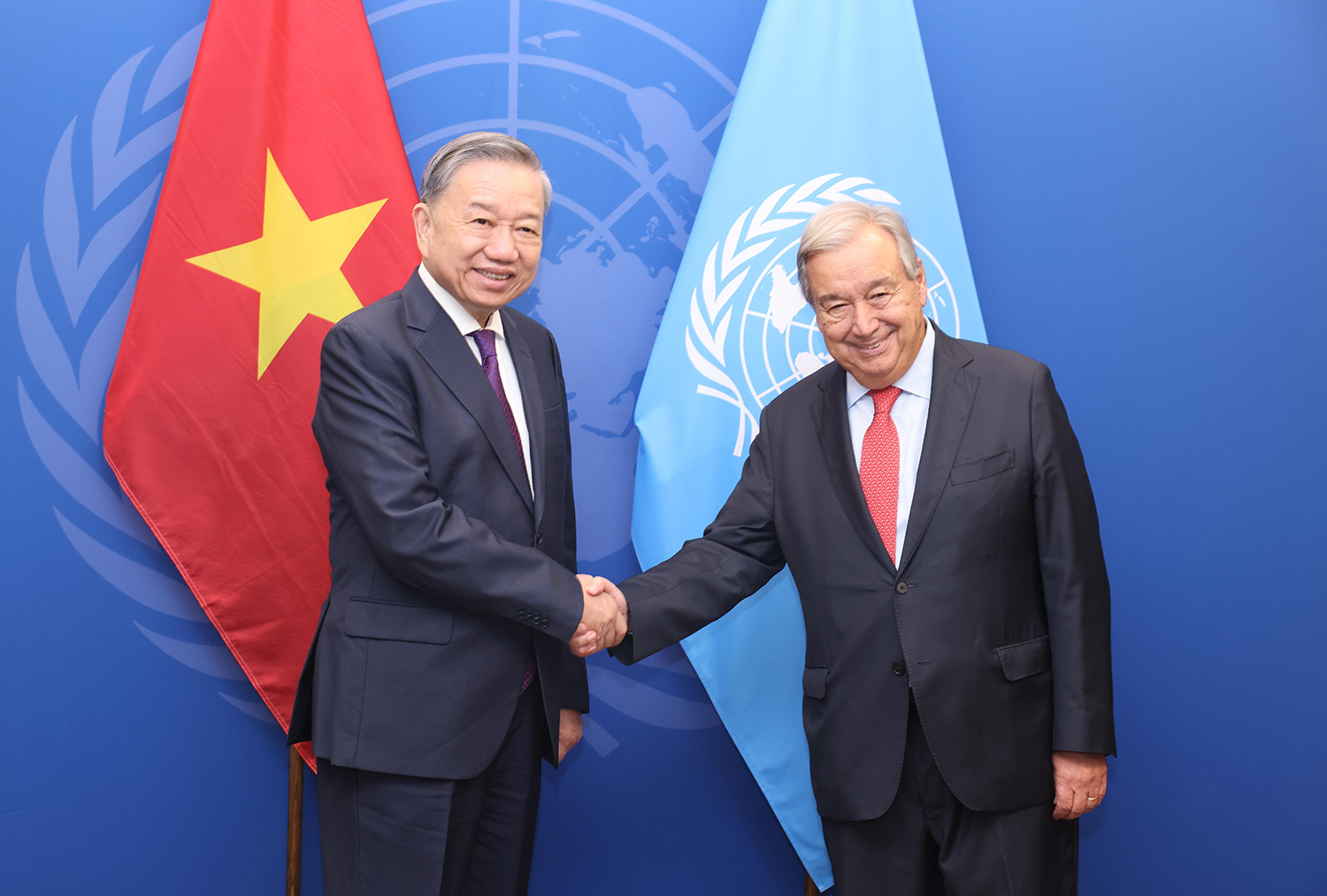
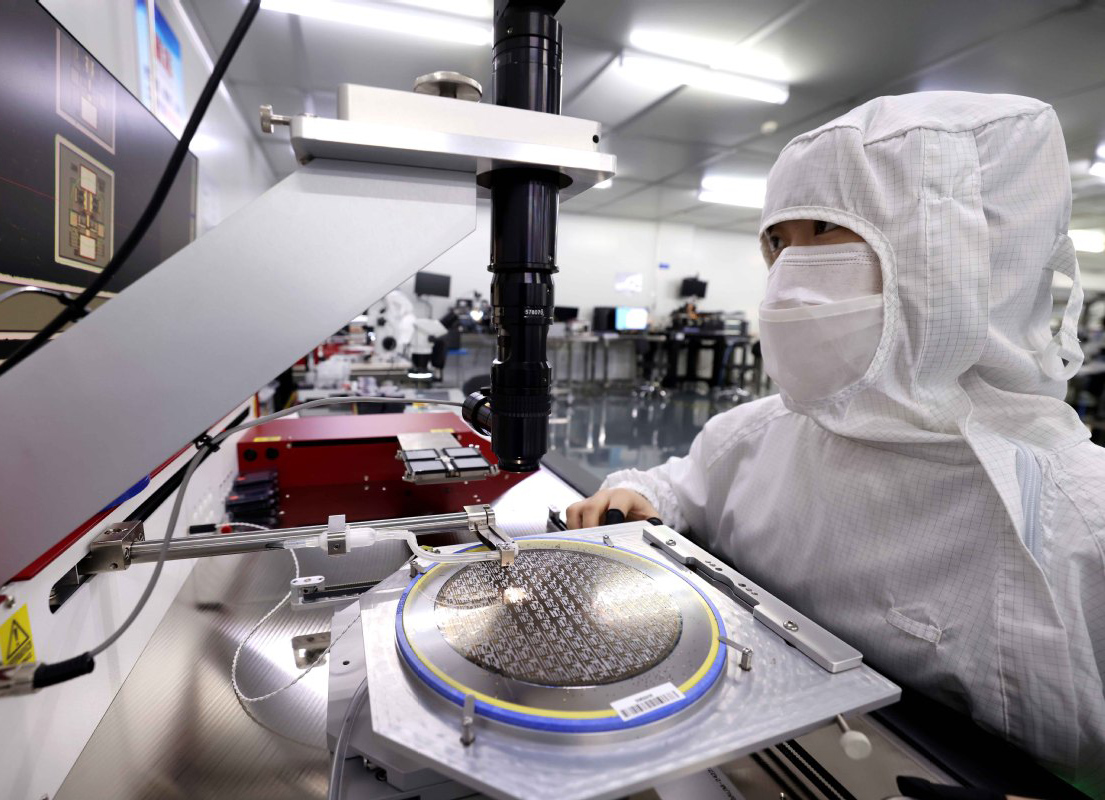
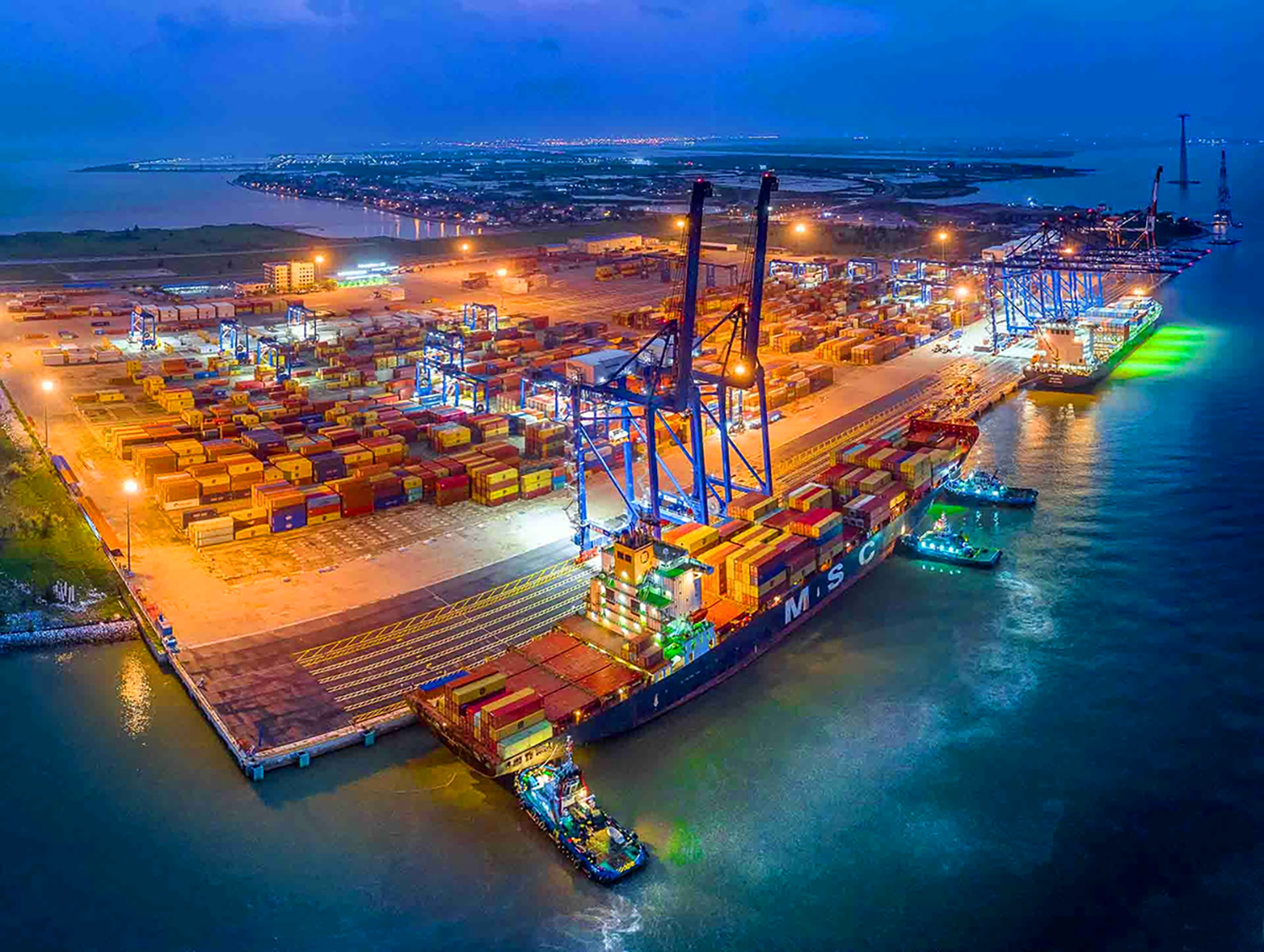

![[Photo] Welcoming ceremony for Prime Minister of the Kingdom of Thailand Paetongtarn Shinawatra on official visit to Vietnam](https://vphoto.vietnam.vn/thumb/1200x675/vietnam/resource/IMAGE/2025/5/16/cdd9e93739c54bb2858d76c3b203b437)
![[Photo] Prime Minister Pham Minh Chinh holds talks with Prime Minister of the Kingdom of Thailand Paetongtarn Shinawatra](https://vphoto.vietnam.vn/thumb/1200x675/vietnam/resource/IMAGE/2025/5/16/23b5dd1e595d429491a54e3c1548fb79)
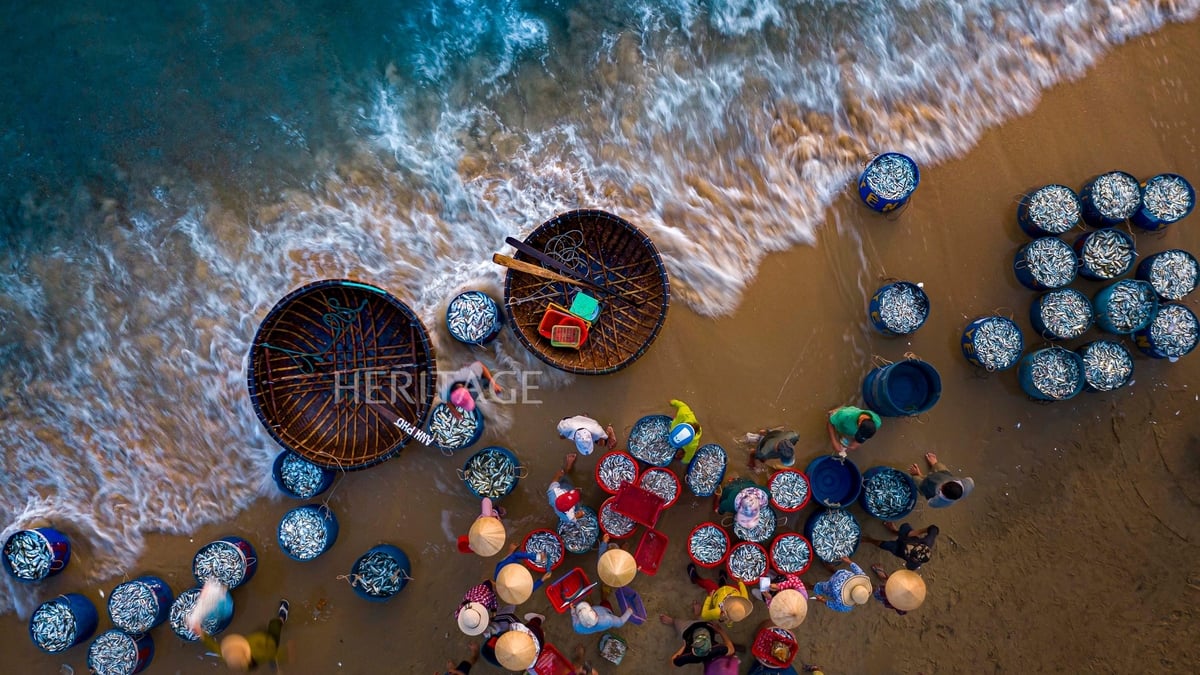


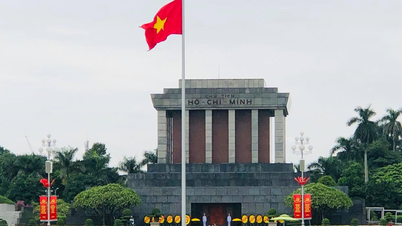

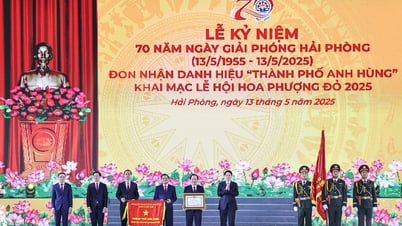


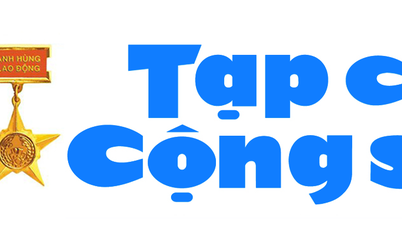
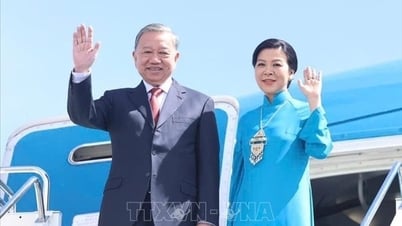
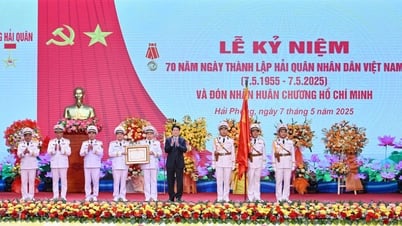




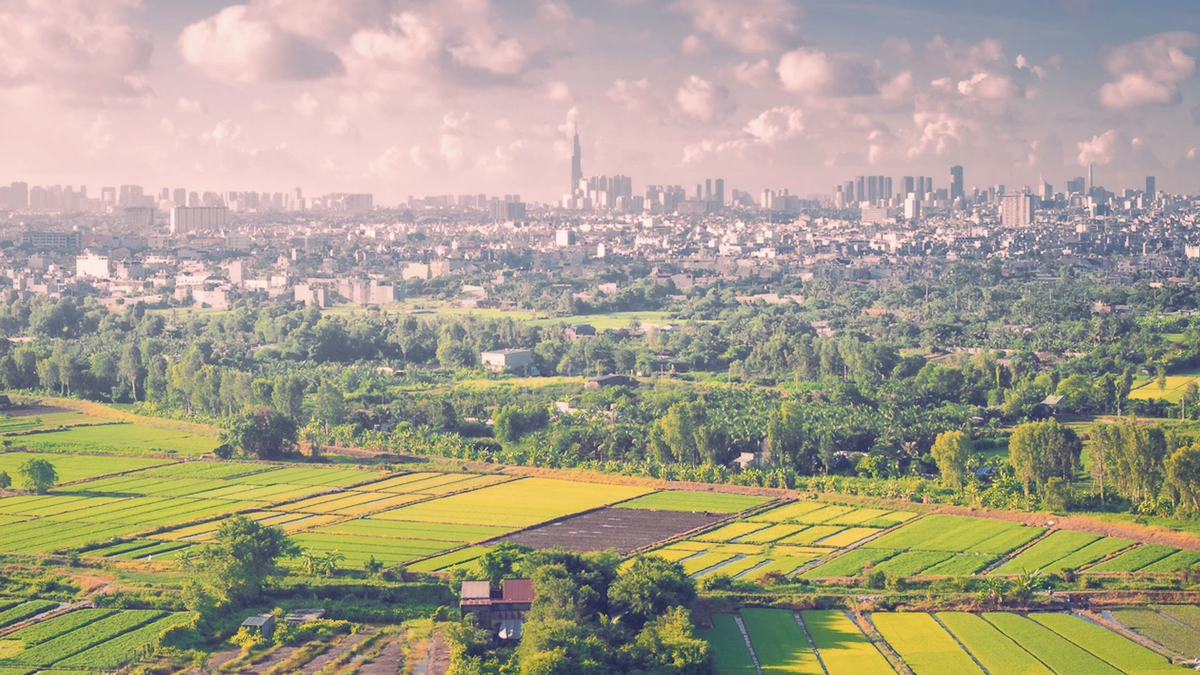


































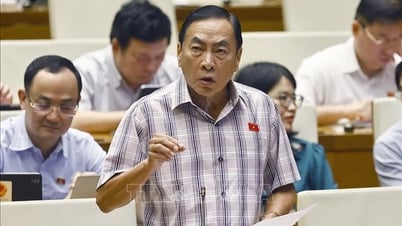
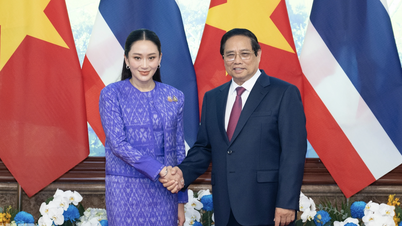
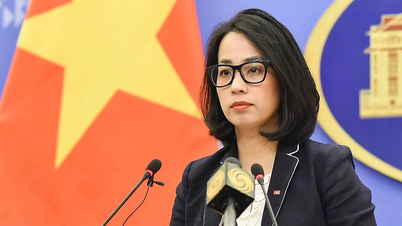



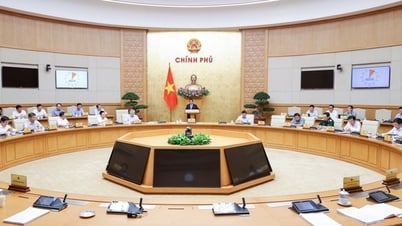

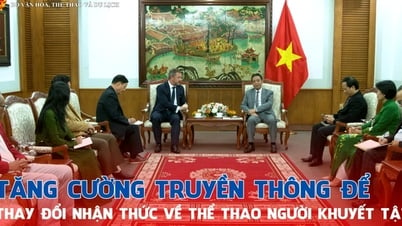
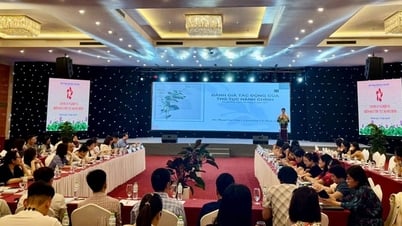
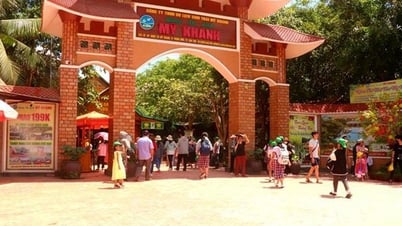


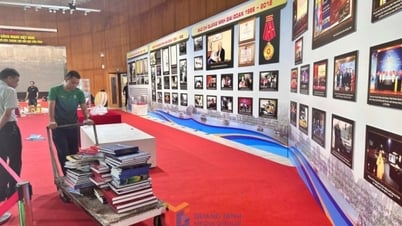

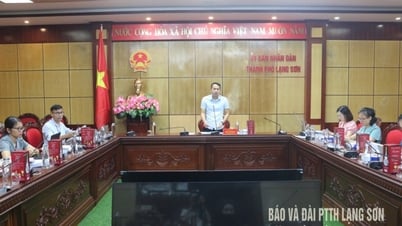



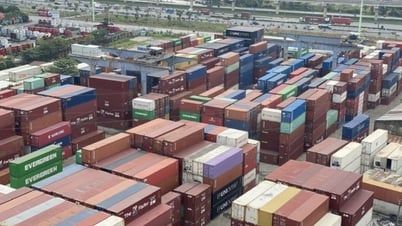
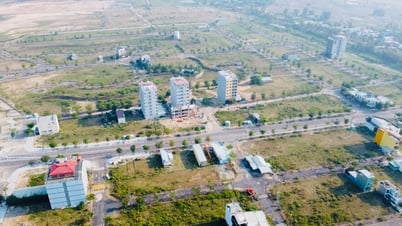











Comment (0)